Loch Ness Expedition Member Marty Klein Visits Museum
Posted by: Loren Coleman on April 8th, 2012
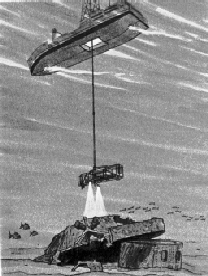
On Saturday, April 7, 2012, the International Cryptozoology Museum had a surprise celebrity visitor: Marty Klein, the inventor of the side scan sonar used during the Loch Ness expeditions of the 1970s, and which later became important in finding the Titanic and other shipwrecks.
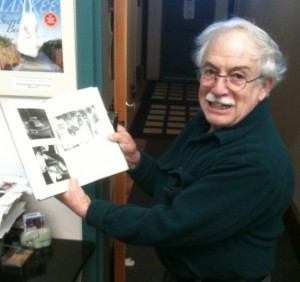
Marty Klein, 2012, at the ICM, pointing out his Loch Ness work in Dennis L. Meredith’s 1977 book, Search at Loch Ness: The Expedition of The New York Times and the Academy of Applied Science. Photo by Loren Coleman.
The well-known MIT electrical engineer Professor Harold E. (Doc) Edgerton (1903-1990) first collaborated with WHOI in underwater photography in the late 1930s. Doc began to experiment with sonar in 1953 while assisting Jacques Cousteau in taking the first deep ocean pictures in the Mediterranean. In order to focus the camera accurately, they needed to know the exact distance between camera and sea bottom. This was accomplished with precision-timed sonar sources called “pingers”. Doc observed from the camera sonar signal that sound echoes could record layers of sediment just below the bottom and stated, “They showed me more than I needed to see.” This started Doc on developing his “mud penetrator,” a high-resolution acoutic sub-bottom profiler.

Martin Klein at work refining sonar signals in Doc Edgerton’s MIT lab in 1961. Courtesy Martin Klein.
In 1961, Martin Klein approached Doc about finding an interesting topic for his senior thesis in electrical engineering. Doc proposed that Klein improve the signal processing of his mud penetrator. After much hard work, Klein improved the signal, had his thesis topic and an ongoing connection to Doc. Following graduation, Klein worked briefly in Doc’s MIT lab and assisted with experiments in using the mud penetrator in a horizontal direction to detect bottom topography.
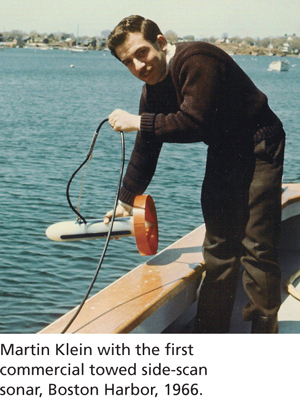
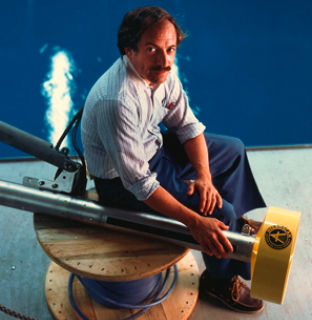
Martin Klein (MIT Class of 1962), founder of Klein Associates, Inc., Salem, New Hampshire in 1967. Photo by John Goodman, courtesy Martin Klein.
Marty Klein is the man behind several side-sonar experiences at Loch Ness, which concurrently were occurring during periods when photographs, now famous and debated, became famous.
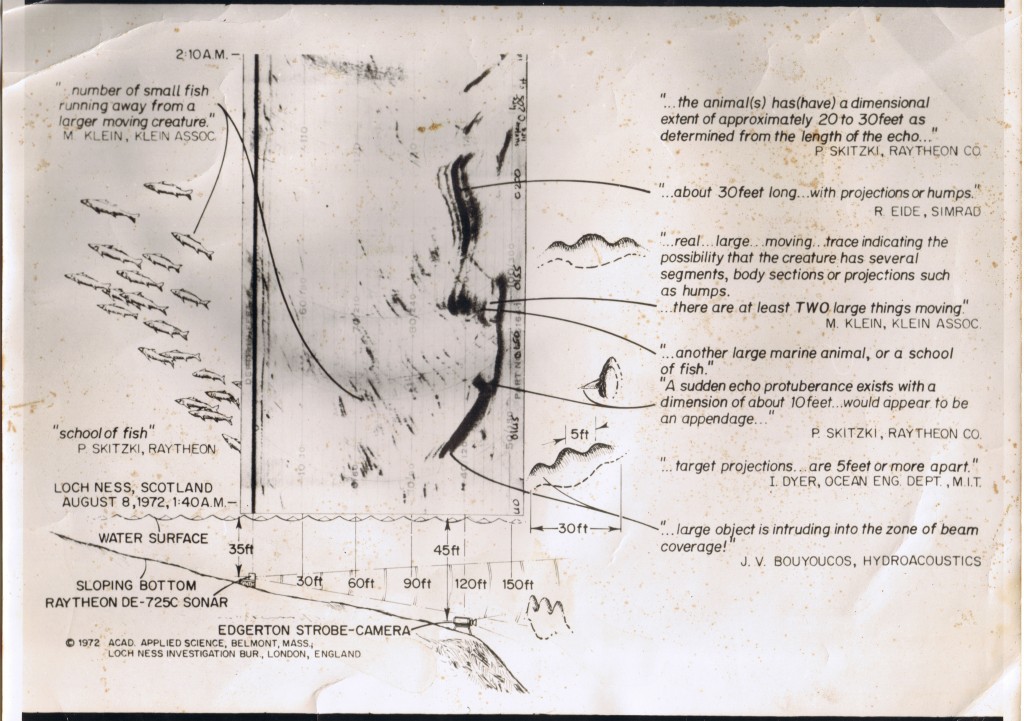 Edgerton AAS 1972 document (Thanks to Dick Raynor).
Edgerton AAS 1972 document (Thanks to Dick Raynor).
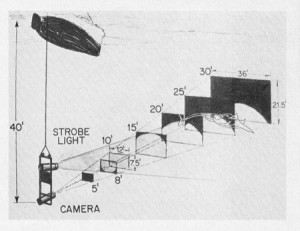
On August 8, 1972, underwater footage was taken in Urquhart Bay near Temple Pier by the team headed by Robert H. Rines from the Academy of Applied Science of Belmont, Massachusetts. The film, taken from an underwater camera suspended from Rines’s boat Nan, corresponded to a Raytheon sonar tracking deployed on another boat, the Narwhal, of a large object that seemed to be chasing fishes. Two frames show a roughly triangular (rhomboid) flipper or fin against a rough body, while a third shows two blobs. The flipper images became clearly visible only after digital enhancement, resulting in criticisms that the photos were retouched, which was not technically what occurred.
On June 20, 1975, Robert Rines obtained two more subsurface photographs southeast of Temple Pier, one showing a “gargoyle” head with apparent horns, and the other the head, neck, and body of a allegedly plesiosaur-like animal. Many experts dispute that the photos show Nessie. G. E. Harwood concluded in 1977 that both images show debris and silt on the loch bottom. Adrian Shine thought the full-body shot might actually show shifting silt patterns, and the gargoyle head could be a tree stump that scuba diver Dick Raynor photographed and dredged up in October 1987 during Operation Deepscan.
The 1975 underwater photo by Rines, while Klein was on the sonar, appears to show the body, flipper, neck, and head of a large animal in Loch Ness. That impressive underwater picture of a large unknown creature in Loch Ness made the front page of the New York Times (April 8, 1976); the photograph was captured in 1975 with an underwater camera using a sonar echo technique. A scientific report by Martin Klein and Harold E. Edgerton appeared in Technology Review (March-April 1976).
(The photographs resulted in the bestowing of the formal Latin name Nessiteras rhombopteryx, given by Sir Peter Scott and Dr. Robert Rines in 1975; it was based on the underwater photographs of 1972 and 1975. The name means “the Ness wonder with the diamond-shaped fin.” Their paper was published in Nature , 258, 1975: 466–468.)
On June 30 and July 1, 1976, Robert Rines, Marty Klein, and Charles Wyckoff recorded (in various ways) large moving objects on an EG&G Mark 1B side-scan sonar mounted at Temple Pier, on the shores of Loch Ness.

Survey project, Loch Ness (Scotland, UK) – Charles Finkelstein and Martin Klein, 1976. MIT photo by Doc Edgerton.
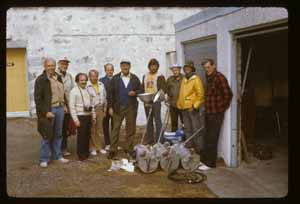
Sonar survey project, Loch Ness (Scotland, UK) – Harold E. Edgerton, Bob Rines, Martin Klein, Thomas Cummings, Garry Kozak, Glen Stors, John Lothrop, Thomas Cummings, Robert Needleman 1978. MIT photo by Doc Edgerton.
The International Cryptozoology Museum was honored by Marty Klein’s tour of our museum, and his sharing of his historical insights with us. We look forward to future visits by Mr. Klein.
About Loren Coleman
Loren Coleman is one of the world’s leading cryptozoologists, some say “the” leading living cryptozoologist. Certainly, he is acknowledged as the current living American researcher and writer who has most popularized cryptozoology in the late 20th and early 21st centuries.
Starting his fieldwork and investigations in 1960, after traveling and trekking extensively in pursuit of cryptozoological mysteries, Coleman began writing to share his experiences in 1969. An honorary member of Ivan T. Sanderson’s Society for the Investigation of the Unexplained in the 1970s, Coleman has been bestowed with similar honorary memberships of the North Idaho College Cryptozoology Club in 1983, and in subsequent years, that of the British Columbia Scientific Cryptozoology Club, CryptoSafari International, and other international organizations. He was also a Life Member and Benefactor of the International Society of Cryptozoology (now-defunct).
Loren Coleman’s daily blog, as a member of the Cryptomundo Team, served as an ongoing avenue of communication for the ever-growing body of cryptozoo news from 2005 through 2013. He returned as an infrequent contributor beginning Halloween week of 2015.
Coleman is the founder in 2003, and current director of the International Cryptozoology Museum in Portland, Maine.

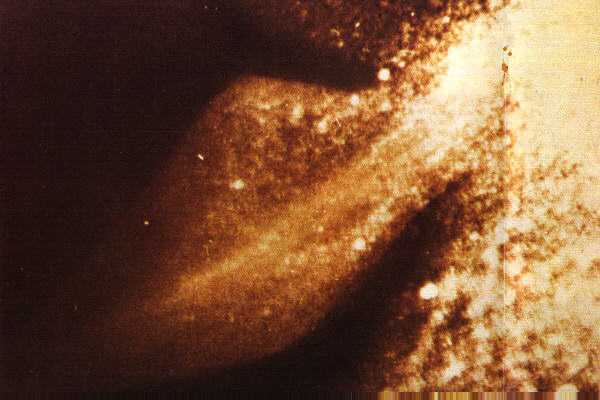

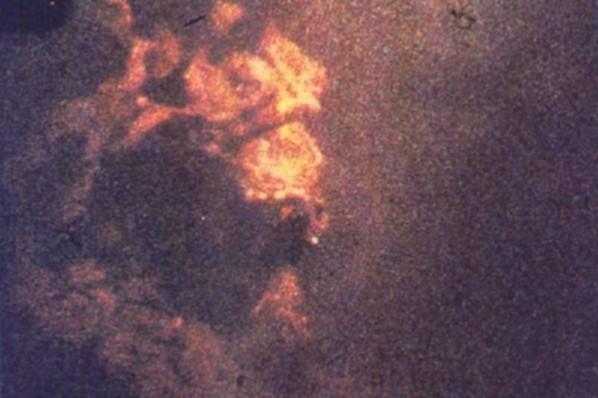
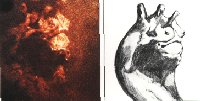
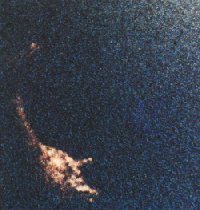









I’m just curious, Loren; what does Mr Klein today believe they photographed? Silt patterns, debris, and a tree stump? Or a large, moving, animate object? Have any of his conclusions evolved in the intervening years?
The 1970’s were the Golden Age for Nessie Investigating.
Like oldphilosopher, I too would like to know Klen’s current perspective about Nessie and the investigations he carried out all those years ago.
I think the ICM should have some diorama or exhibition that would allow visitors to realize just how massive loch Ness really is, and how incredibly murky its waters are.
Maybe using some goggles designed to insert several layers of ‘smoked’ transparent acrylic, to show the visibility of the loch at different depths? Right now I’m thinking of a sort of wooden box with 2 holes on one end for the eyes, and the other end open. But the top side of the box would have several thin grooves or slots which allow the insertion of 3mm acrylic pieces. Then you would coax the visitor to try to distinguish some target or object –maybe a little plesiousaur toy? ;)– and slowly add the layers to show the different depths.
Cheap, and illustrative 🙂
Those photos (especially the flipper) are some of the best in the hunt for lake monsters, and have fueled my imagination for 30 years.
I would like to echo the comments above. What does Mr. Klein think today? I’m hoping his visit to the museum indicates that his opinion of the evidence has not changed.
Marty Klein has not changed his mind about what he found during his side-scan work at Loch Ness in 1972.
His quotations at the time apply today:
“… real … large … moving … trace indicating that the creature has several segments, body sections or projections such as humps,” said Marty Klein of Klein Associates, and,
“… there are at least TWO large things moving,” said Klein.
Ok, but what does he think Nessie might *be*? A plesiosaur? an eel? a seal? a sturgeon?
It’s alright to speculate if you alert people you’re doing it beforehand 😉
RPJ…Marty Klein is a brilliant person. Bright people know when to say something intelligent and when to not make stupid statements.
Klein is an engineer.
Why would he wish to speculate on the possible biological origins or alignments of a cryptid when doing so would be completely out of his field of expertise?
Because that’s what human beings do? we are driven by our dreams and our imagination; and even if engineers prevent their speculations from interfering with their technological expertise, they can still go home at night and ponder like the rest of us 😉
Ha ha, RPJ, it is obvious you don’t know many engineers from MIT.
True. But I bet quite a lot of them got interested in engineering in the 1st place because of this fine gentleman 😉
RPJ, wrong era for inspiration.
The first regular episode of Star Trek aired on Thursday, September 8, 1966.
Klein began work with Doc in 1961, and already had an experimental model of the side-scan sonar working in Boston Harbor by 1966.
Oh, I wasn’t referring to Mr. Klein specifically in my last comment. Sorry if I didn’t express it properly.
But Ok, I can give you other examples: Both Robert Goddard and Werner Von Braun got hooked up on science and rocketry because they both read War of the Worlds as children. Maybe as adults they no longer believed Martians existed –though if you ask a UFO buff, he might disagree ;)– but I wouldn’t be surprised if they held personal opinions with regards of life on other planets.
The point I’m trying to make is that even engineers were inspired by something in their early age that coached them to pursue a career in engineering. And I’d be willing to bet Mr. Klein was no different.
All true creativity & innovation comes from applying things from a different field on to another in a different never-tried way. And that requires imagination. And imagination is not something that you just shut down when you leave the office.
As a personal aside, when my turn came to choose a career, I was divided between my love for science and my deep artistic sensibilities. I chose to study Design, which might tell you something about my predilection for the ‘excluded middle’ in the Fortean world 😉
“Marty Klein has not changed his mind about what he found during his side-scan work at Loch Ness in 1972.”
“Marty Klein is a brilliant person. Bright people know when to say something intelligent and when to not make stupid statements.”
How can you breathe when choking on so much irony?